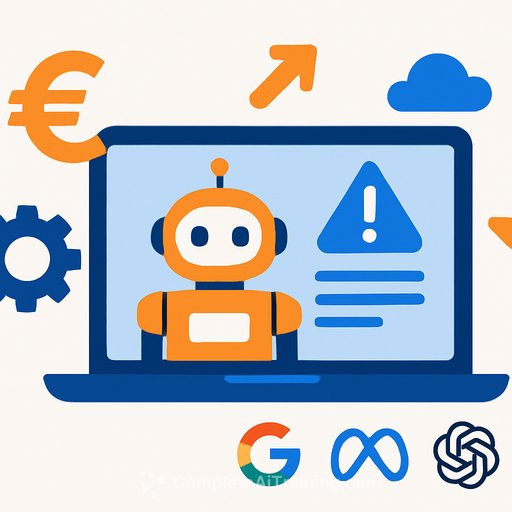EU pauses strict "high risk" AI rules until December 2027: what product teams should do now
Europe plans to delay the toughest parts of its AI Act for "high risk" uses from August 2026 to December 2027. The package, called the Digital Omnibus, is framed as simplification to boost competitiveness, not a rollback.
For product leaders, this buys time but raises the bar on planning. Use the window to structure compliance, data strategy, and vendor alignment-before deadlines compress.
The headline changes
- Delay: Enforcement of strict "high risk" AI rules pushed to December 2027. Areas include biometric identification, hiring and exams, health services, law enforcement, and creditworthiness.
- Data use for AI training: Proposed updates would let companies train AI models on Europeans' personal data under EU rules (details to be hammered out during debate).
- Cookies: Simpler consent flows are proposed to reduce user friction and operational overhead.
What this means for your roadmap
The extra time is a grace period, not a reprieve. Treat 2025-2027 as your build-out phase for controls, documentation, and product UX shifts.
- Re-baseline milestones: Set internal readiness checkpoints by mid-2027 for "high risk" functions. Don't wait for final guidance to start evidence gathering.
- System classification: Map every AI feature to AI Act categories. Flag anything touching identity, employment, education, health, policing, or credit.
- Data strategy: Revisit lawful bases, consent, minimization, retention, and cross-border flows. Update DPIAs and records of processing for training and inference data.
- Vendor governance: Require model and data documentation, evaluation reports, and conformity plans. Add contractual hooks for audits and incident reporting.
- Risk controls: Implement human oversight, event logging, monitoring, and resilience testing for models that could affect rights or safety.
- UX and transparency: Plan disclosures, notices, and accessible opt-outs. Align cookie and consent flows with the proposed simplifications without weakening trust.
Working timeline (practical, not official)
- Now-Q2 2026: Classification, gap analysis, design controls, and data governance upgrades.
- Q3 2026-H1 2027: Pilot conformity evidence, incident playbooks, evaluation pipelines, and vendor attestations.
- H2 2027: Finalize documentation, run internal audits, and prepare for enforcement on "high risk" areas.
AI training on EU personal data: opportunities and guardrails
The proposal opens the door to train models using EU personal data, subject to EU privacy rules. Expect tight conditions and active scrutiny.
- Establish a dataset registry: sources, lawful bases, purposes, retention, and data subject rights handling.
- Strengthen consent and opt-out flows where required. Make revocation practical and fast.
- Prefer privacy-preserving methods: sampling, aggregation, redaction, synthetic data with strict validation, and differential privacy where feasible.
- Document provenance and transformations. Keep a clean audit trail for every model release.
Cookie consent simplification
Simpler consent could reduce churn and compliance drag. Use this to tidy your banners and flows while keeping choices clear and reversible.
- Test fewer, clearer options; remove dark patterns.
- Respect signals consistently across web and app surfaces.
- Measure impact on conversion and retention, not just legal coverage.
Action checklist for product leads
- Appoint a cross-functional AI compliance squad (Product, Legal, Privacy, Security, Data, Trust & Safety).
- Inventory AI features and rank by risk and user impact.
- Define evaluation gates: bias, safety, performance drift, and red-team procedures.
- Lock a documentation standard now: model cards, data sheets, evaluation reports, and incident logs.
- Update your consent and transparency UX; prep for cookie changes.
- Negotiate vendor commitments for evidence, monitoring, and fixes within set SLAs.
Further reading
Level up your team
If you're aligning roles by job function for AI work, see curated training paths here: AI courses by job.
Your membership also unlocks:






